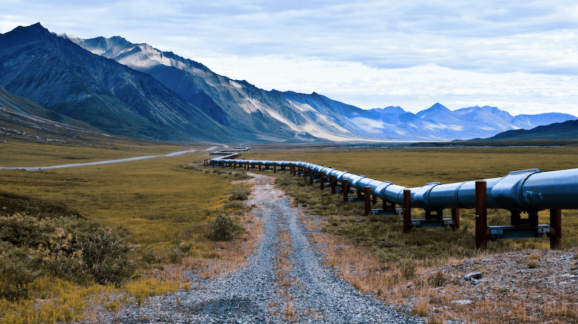Judge Blocks Keystone XL Pipeline

 Montana federal judge Brian Morris ruled on November 8th that the State Department and TransCanada Corporation must discontinue all efforts to construct or operate the Keystone XL Pipeline until the Department has completed a supplement to its 2014 Supplemental Environmental Impact Statement (SEIS) that complies fully with the National Environmental Policy Act (NEPA) and Administrative Procedure Act (APA).
Montana federal judge Brian Morris ruled on November 8th that the State Department and TransCanada Corporation must discontinue all efforts to construct or operate the Keystone XL Pipeline until the Department has completed a supplement to its 2014 Supplemental Environmental Impact Statement (SEIS) that complies fully with the National Environmental Policy Act (NEPA) and Administrative Procedure Act (APA).
Plaintiffs, a coalition of environmental and tribal groups, petitioned the court to stop the pipeline on numerous grounds. Interestingly, the court rejected many of their arguments.
The Trump State Department relied on the 2014 SEIS which found that building the Keystone XL Pipeline would not materially contribute to climate change. Indeed, the SEIS found that if the pipeline were blocked, roughly the same quantity of Canadian crude would reach U.S. refineries but through less efficient modes of transport, such as rail and barge. Therefore, the Keystone XL Pipeline was actually the low-carbon alternative. In a rebuff to plaintiffs, Judge Morris ruled that the Department’s assessment of alternatives to the Keystone XL Pipeline and analysis of transport by rail did not violate NEPA. The judge also disagreed with plaintiffs that certain aspects of the 2014 SEIS violate the Endangered Species Act (ESA).
However, Judge Morris ruled that the Trump Statement Department’s March 2017 Record of Decision (ROD) violated NEPA and the APA because it did not provide a “detailed justification for reversing course and adopting a policy that ‘rests upon factual findings that contradict those which underlay its prior policy.’”
That is nonsense. The Trump ROD provides at least as much detail as the Obama State Department’s November 2015 ROD. The major difference is that the Trump ROD is more consistent than the Obama ROD with the Obama State Department’s analysis in the 2014 SEIS. As noted, the SEIS found that building the Keystone XL would lead to lower greenhouse gas emissions than the alternative modes of transport if the pipeline were denied. Moreover, building the pipeline would also lead to fewer major oil spills and fatal injuries.
The Obama State Department was therefore forced to define the U.S. national interest in terms of virtue signaling and political optics. Specifically, the Obama ROD stated that “a key consideration at this time [i.e., two weeks before the Paris Climate Conference] is that granting a Presidential Permit for the this proposed Project would undermine U.S. climate leadership and thereby have an adverse impact on encouraging other states to combat climate change and work to achieve and implement a robust and meaningful global climate agreement.”
That was silly then, and it’s even sillier now. There was no chance any of the other 190-plus nations that became parties to the Paris Agreement would not do so because the United States added another 875 miles of pipeline to a national oil and gas pipeline network already spanning several hundred thousand miles. What’s more, as the Trump ROD suggests, a “decision at this time” to approve the Keystone XL would not likely affect other countries’ plans vis-à-vis the Paris Agreement. Indeed, it has been 20 months since the Trump State Department approved the Keystone XL Pipeline, and not a single foreign country has indicated an intention to withdraw from the treaty.
It’s too bad the 2014 SEIS did not present the most important implication of its greenhouse gas analysis. As climate scientist Chip Knappenberger pointed out, using the Obama EPA’s own climate policy calculator, a model called MAGICC, even if we make the totally unrealistic assumption that all Keystone crude is additional petroleum that would otherwise remain in the ground, running the pipeline at full capacity for 1,000 years would add less than 1/10th of one degree Celsius to global warming. Climatologically, the Keystone XL has always been, and always will be, irrelevant.